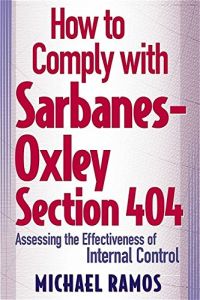Join getAbstract to access the summary!

Join getAbstract to access the summary!
Michael Ramos
How to Comply with Sarbanes-Oxley Section 404
Assessing the Effectiveness of Internal Control
Wiley, 2004
What's inside?
Understanding Sarbanes-Oxley may take some technical probing – but that sure beats what happens if you don`t understand.
Recommendation
Author Michael Ramos provides comprehensive, meticulously detailed information. He offers a detailed guide to evaluating your company’s internal controls. He addresses Sarbanes-Oxley Section 404 legislation, as well as associated Security and Exchange Commission (SEC) and Public Company Accounting Oversight Board (PCAOB) regulatory requirements, even covering the COSO and COBIT reporting frameworks. While expert and exhaustive, the book suffers from a dense, academic writing style. getAbstract.com suggests it to those who seek a very detailed compliance overview and who already have experience with understanding auditing standards and related governmental regulations.
Summary
About the Author
Michael Ramos, CPA, is a consultant and writer who works with auditing and accounting technical matters. He has written general practice manuals, implementation guides and authoritative AICPA and accounting guides.

















Comment on this summary